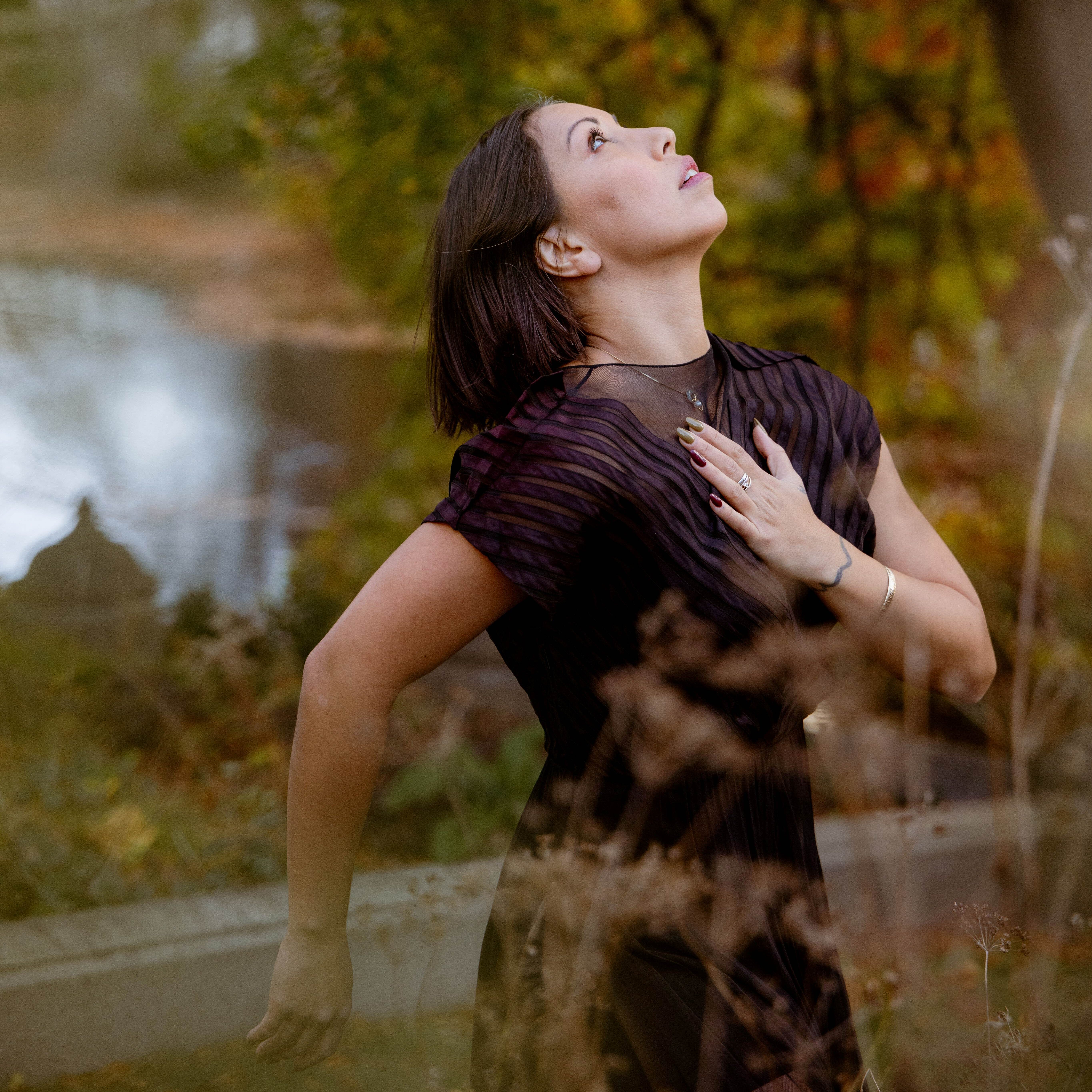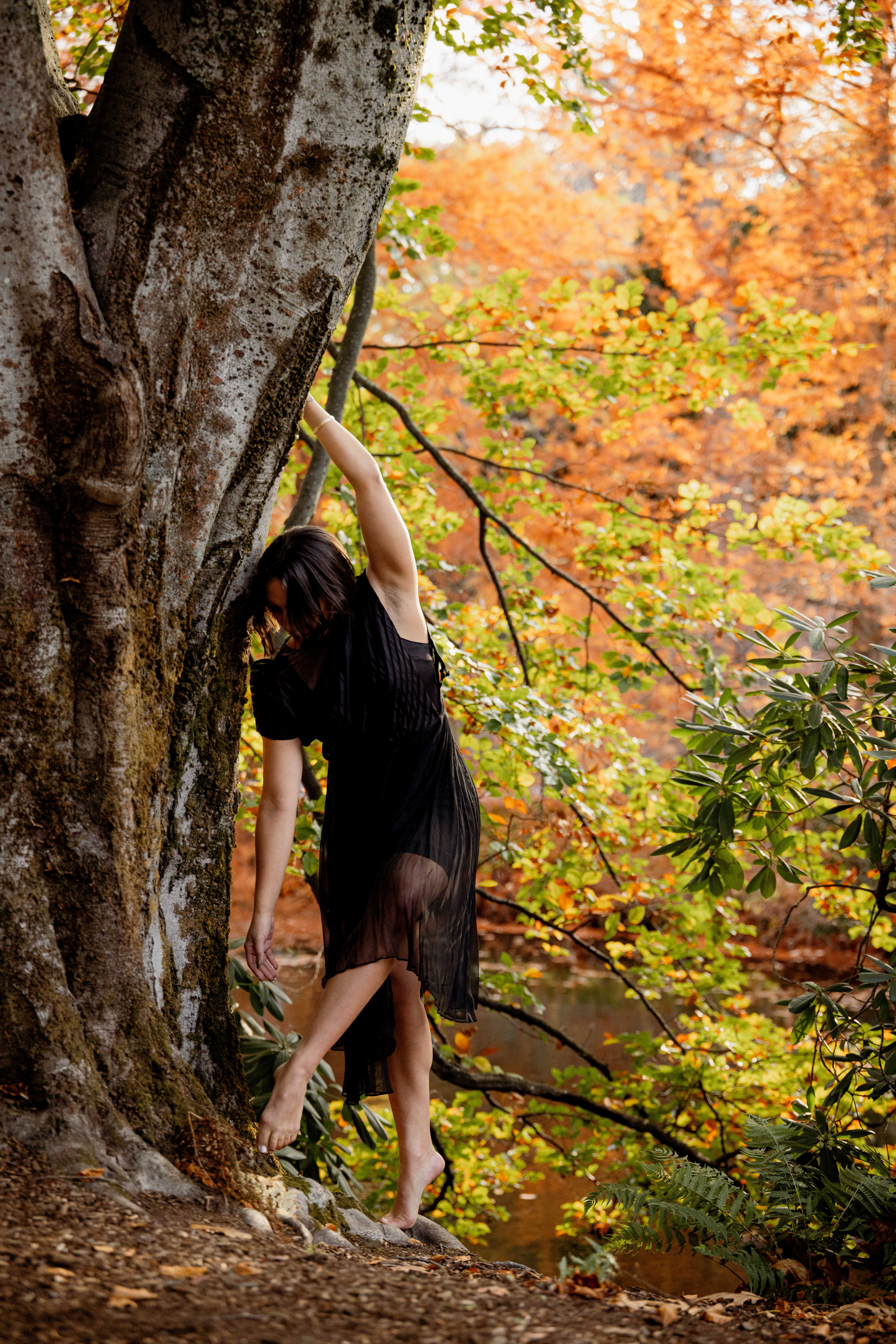Moving Through Grief: A Conversation with Artist-in-Residence Lonnie Stanton
Amelia Maguire January 24, 2025 Art

When/how did you know you wanted to pursue a career in dance?
By high school I was passionate about dance. I realized I would love to try and make it my career. For an English class I wrote a final paper on how universal dance is. Writing that, and receiving positive feedback from the teacher, solidified for me it was worth pursuing.
What motivated you to start choreographing and teaching?
Teaching came first for me. I was raised by a teacher and surrounded by educators throughout my childhood. It felt natural to begin teaching after graduating from the Boston Conservatory. I understood teaching was an option for fulfillment, more steady income, and could complement a performance career. Choreographing has been a different journey for me. I did not have a strong desire to choreograph professionally in college or in my twenties. I was much more focused on the role of dancer and really enjoyed the collaborative nature of most choreographers I worked for. I did dabble in projects when I felt inspired or was approached by others. Much of what I choreographed in the first 10 years of my dance career was all about collaborating with friends of different artistic disciplines. My biggest inspiration to choreograph site specific work came from working with Kinesis Project. I loved designing dance outside in public spaces, where it was a challenge to navigate and connect with roaming audience members. The third wall was obliterated.

As part of your residency, you led a “Moving Through Grief” workshop with adults and are planning to lead another one for families in collaboration with a member of your AiR cohort, Fatima Seck. How do you think grief can be supported through dance?
I think dance is intrinsically connected to our emotional and spiritual capacity as humans. Grief is a part of being human and so is dance. I have been reading The Smell of Rain on Dust by Martin Prechtel. This book was suggested to me by a participant who attended our adult “Moving Through Grief” workshop in August! Prechtel writes on grief and praise, a combination that may seem odd in Western culture. I agree with his thoughts on the deep relationship between these two. Grief is an expression of our love, it is an opportunity to praise what has been lost. So many indigenous cultures hold ceremonies to create space for active grief. These ceremonies allow one to feel, move, dance, and wail within the safe container that is the community. To fully allow oneself to move through grief we must be fully present in that experience. This can certainly include physical expression. In these workshops, the goal is to invite participants to become more present in their bodies and in the gorgeous landscape at Mount Auburn. The support for grief comes from within, which is why I utilized my yoga practice to facilitate the adult workshop. Our breath is our life force and an opportunity to connect to our feelings and our physicality. Both feeling the feelings, and self expression are needed to allow grief to move through us. Dance is a wonderful medium to express and process these feelings.
The life cycle is so beautifully represented at the Cemetery. I can feel equally grounded and expansive while sharing space there.
Lonnie Stanton, 2024-2025 Artist-in-Residence
You are currently choreographing a site-specific piece set around Auburn Lake for your final residency performance. You have previously done site-specific work with Kinesis Project Dance Theater in New York City, among others. What draws you to create for specific spaces?
I adore the challenge of crafting movement for specific settings, especially outdoors. The play on scale and texture is thrilling. I am interested in sharing concert dances outside the proscenium. It can make the work more accessible, and allows the audience far more autonomy. No one is in a chair facing right to the stage. No lighting is telling the audience where to look. They can choose the angle in which they view the dance and use their own faculties to zoom in and out to watch as they wish. Do you notice the dancer’s every gesture, or their relationship to the tree they are near? Do you zoom out to take in most of Auburn Lake, and notice the dancer’s relationship to the nature that surrounds them? This work asks the audience to make more decisions, and therefore there is opportunity for all involved to experience surprises.
Creating art in a cemetery is not something everyone wants to do. What is different or special about dancing here?
I am never alone. When I rehearse on site I feel the presence of those that rest here and live here (flora and fauna). The life cycle is so beautifully represented at the Cemetery. I can feel equally grounded and expansive while sharing space there. This is different from dancing at a park. The depth in which humanity is honored and remembered is in the air on site. I breathe differently as soon as I am headed towards Auburn Lake on my way along Indian Ridge Path.
What do you hope the audience will take away from your final residency performance?
I hope for the audience to fall more in love with the site, to experience a cemetery with a different perspective, and perhaps consider grief through a new lens. People compartmentalize, hide, even bury their feelings daily in this society. If anyone in the audience grows in their self-awareness and allows their grief to move through them more, that is a huge win for me. I think anyone in this society can benefit from thinking about their relationship to grief further. I am crafting five solos around Auburn Lake. In each solo I am working to explore different points of grief. It is valid to grieve a lost relationship, location, or one’s innocence. Our grief is not only tied to death. I have learned that when I allow grief to be my companion, and move through me, I am immediately filled with immense gratitude.
-----------------------------------------------------------------------------------
Keep an eye on our events calendar for Lonnie's upcoming May and June performances.

Comments
Comments for this post are closed